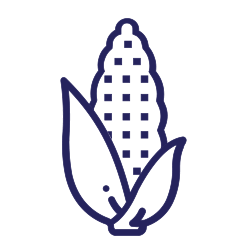The Manitoba Corn Initiative: Economic analysis of optimal crop rotations with corn
Crop Types
- Corn
Collaborating Locations
University of ManitobaBackground
Rotations are difficult to optimize because of intertemporal spillover effects between crops, the economic consequences of which depend on relative input and output prices. Recent findings suggest farmers face real costs when considering rotation adjustments and positive feedback can lead to persistence or inertia in rotation choices. We will develop a dynamic, field level model of crop rotations using data generated from the rotation project developed by Yvonne Lawley to identify empirical optimal rotations using a Sequence Analysis procedure from the bio-informatics literature. The resulting model will be based local empirical data and be able to respond to changes in expected prices and costs.
Objectives
This project is a part of the larger Manitoba Corn Initiative - Corn Agronomy, fertility and agrometeorology. Overall objectives for the program include:
- Identify the best crops to grow prior to corn in a rotation
- Evaluate fertilization strategies for corn grown after canola
- Conduct an economic analysis of optimal crop rotations involving corn
- Identify optimum corn residue management strategies.
- Evaluate fertilization strategies for alternative tillage systems for corn production
- Evaluate the corn heat unit system for Manitoba
Summary
The economic impact of continuous cropping is clear. Continuous corn crops average $57 per acre less than soybeans and corn grown in rotation. Continuous canola earns $64 per acre less than canola and wheat grown in rotation and continuous wheat earns $79 less. Soybeans’ impact on other crops is also clear. Even though it is the third most profitable crop in average budgets, its positive impact on other crops makes it a very profitable choice within rotations. Soybeans were part of all of the top ten rotations. As we have shown in other work, the prices of corn are highly variable and may affect the optimal rotation as we move forward. To check this impact Sakulanda adjusted the prices in her optimal budgets using the past 13 years of annual prices. In 10 of 13 years corn and soybeans remained as the most profitable rotation choice. In 3 of the 13 years the highest earning rotation contained canola.
Key Takeaways
- Crop rotation demonstrated greater profit than continuous cropping
- Soybean's positive impact on other crops in rotation make it a profitable choice
- Using 13 years of data, in 10 of 13 year corn and soy are the most profitable rotation choice














